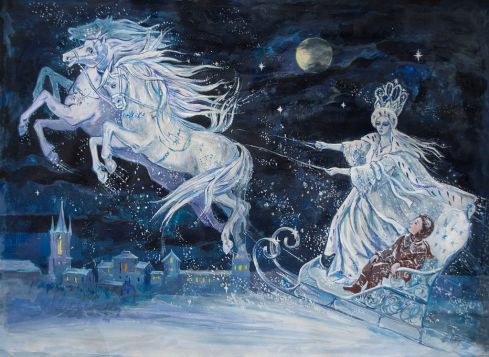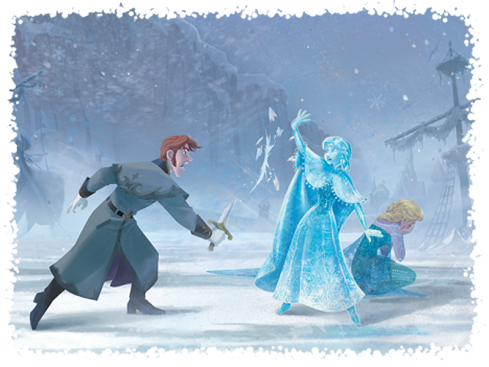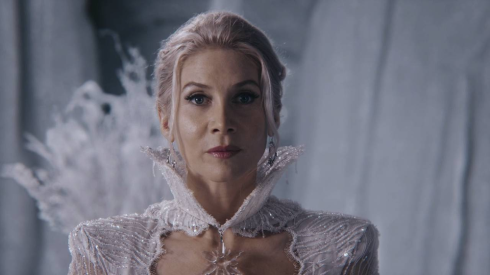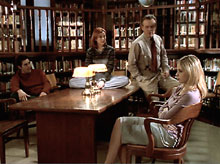In our book, we have a chapter on gender where we discuss a couple of YA series of novels that were unfinished at the time of (our) publication. Since our book has been released, two of these series have had a third volume published, and so I want to share some thoughts about them in the general context of what we discussed about gender and shapeshifting. I’ll also recap, briefly, the previous books in the series.
The first of these is a series of novels by Jennifer Lynn Barnes, Raised by Wolves and Trial by Fire. The series is aimed at a YA audience and tells the story of Bryn, a human girl who was saved by a werewolf pack after a “Rabid” wolf killed her parents.
Bryn is quite literally raised by the werewolves, and the first book is about how she leaves the pack after discovering the pack’s Alpha, Callum, has lied to her when he said the Rabid was killed. In fact, the Rabid’s still out there wreaking havoc and is changing humans into wolves, which Bryn thought was impossible. She disobeys Callum’s orders about a new wolf, a teenage boy Chase, and has to face pack law with a brutal beating. That leads her adult human guardian Ali to take off with Bryn away from the pack. A couple of Bryn’s friends also team up with her, and Bryn and her merry band of friends track down and stop the Rabid, and Bryn becomes Alpha of her own pack.

We put our discussion of this series in the gender chapter of our book. The reason for this is that the series touches on some of the power aspects of wolf pack hierarchies, and much is made of Bryn’s difficulties conforming to pack life. When she becomes Alpha, this is really interesting because she is: female, and human – two things that are slightly unusual for alpha wolves in many current iterations of teen werewolf literature. The second book is about Bryn trying to lead her pack despite being human, and dealing with a threat to her pack from some supernaturally gifted humans nearby.

At the time of writing our shapeshifting project, the third book Taken by Storm had not yet been released, so I thought we should discuss it here since we weren’t able to do so in the book. I had assumed that this would be the conclusion to the series but it is still open ended, and the events of this book don’t really move much beyond Book 2 if we consider how each ends. However, Barnes has said that she’s not planning to continue the series in the near future – but hasn’t ruled it out, either. So although this third book is apparently the last, it may not be the end.

In Taken by Storm – soap opera connotations of that title aside – Bryn is still struggling with being human as a leader of the wolf pack, and still under threat from others, still fighting off otherworldly forces trying to attack her lupine peeps. There is another Rabid on the loose and Bryn is worried it may be one of her own wolves, so they have to do some more detective work to figure it all out.
Time to insert the usual warning of ***SPOILERS*** ahead, so please stop reading if you don’t want to know the plot.
As in, stop right now and look no further.
***SPOILERS***
Okay, so moving on to the interesting bits.
Killing off the romantic interest is not exactly common in YA literature, so Chase’s death was unexpected. And, just quietly, not unwelcome, but then again I am not exactly in the target demographic, so I expect teenage readers would feel differently, as they should.
As we wrote in our book, Chase seemed to be a “ghost” figure who hardly played any role in the narrative. And now he’s dead, so I think we were a little prescient there. Not prescient enough, however, for just as Trial by Fire introduced “psychics” (people who can enter dreams, have supernatural abilities and the like), here we discover ghosts literally exist. Perhaps not quite literally, since ghosts are not alive by definition, but nonetheless here they are. Given Chase’s minimal influence on narrative, killing him off in the series doesn’t make much of an impact on the plot or on me personally, but full props to Barnes for doing this when some readers would no doubt be disappointed. On the other hand, if this is genuinely the final book, I’m not clear why he died. Being boring is a terrific reason to eliminate a character, but since most readers probably disagree with me here, there has to be a better reason than that for them to accept it. If it’s a motivating factor for Bryn to go on and do something, that’s good, but here it feels a little pointless.
We learn some more about wolf politics here, but it feels tantalisingly shallow, as if we get a glimpse of a much more detailed, interesting world that is being signposted for future books, but apparently not. There is plenty to work with: despite finding the musical-theatre loving wolf Devon irritating for most of the series, I found him much more interesting in this final book as he leaves Bryn’s pack (on good terms) to become Alpha of a neighbouring pack, while rare female wolf Lake is another character who could carry a story.
So how does it end? Bryn is unhappy and still determined to be changed into a werewolf so she can better protect her pack. In the second book she had asked Callum to do it, and as this novel ends he is about to attack her as per their agreement so that she can become a werewolf. Apparently he’s the only one she trusts to do it without actually killing her. So he leaps at her. The end.
As in, the end. That’s it, apparently, for the series. Romantic lead dead. Protagonist pretty miserable. Novel closes as Callum is about to strike.
Not, perhaps, what readers would like, and I rather gather from Barnes’s comment on this subject I mentioned earlier that she has received feedback along this line. Barnes points out that there is some kind of resolution because Bryn is finally on her way to werewolfdom, which is kind of a metaphor for growing up and learning to make hard decisions and be an adult, although I don’t know how far we can push that metaphor. But certainly it’s not resolved in many other ways, and I think that just as readers protested the end of The Hunger Games’s Book 3 Mockingjay for leaving Katniss in a kind of endless despair with only some bits of “hope” given, Taken by Storm also seems a downer (not on the same scale at all, I must say).
Where does that leave the gender politics? As we discussed in our book, Bryn’s power seemed to stem from her humanity given her ability to exist outside pack hierarchies, and it is unusual to have a lead female character involved with her subordinate, but these two aspects are undermined in this third book when Chase dies and when Bryn goes ahead with becoming a werewolf to gain more power for her pack. However, these wolf books still offer a refreshing change because the female character does not abandon everything for the love of a hot supernatural boy: these books are never simply about the romance, and this at least offers one alternative for readers who tire of Bella’s worship of Edward in Stephenie Meyer’s Twilight series or Grace’s obsession with her werewolf beau in Maggie Stiefvater’s Shiver series.
Moving on to the second author, Jackson Pearce’s series that retell fairytales in modern settings with werewolf themes continues. We wrote about Sisters Red and Sweetly in the same chapter on gender where we were asking if these hybrid identities of human/ wolf allow the female characters more latitude to escape conventional gender norms and power relationships.


These books take the Little Red Riding Hood and Hansel & Gretel fairytales and give them a spin by turning the lead female teenage characters into wolf hunters: no longer victims waiting for a man to save them but kick-ass heroines a la Buffy, angst and all. The werewolves are called Fenris and are cast in the mould of villains: totally evil monsters who kill young girls. Pearce therefore uses werewolves differently to the sympathetic misfits we more commonly see in contemporary iterations, plus it’s an attempt to subvert some of the conventions around female victims and male predators.
Each of the books is a standalone and has different main characters (but linked in some ways, as we discover), and there is an overarching plot connecting all the books, a plot that concerns the werewolves. To this series we can now add Fathomless, which tackles The Little Mermaid tale.

In this book, we have three triplets, each with a power of touching someone and knowing their past, their present, or their future. The main character is Celia Reynolds, one of the triplets (and readers should recognise that last name and deduce that these girls are siblings to Silas and Samuel Reynolds, who each were hero wolf-hunters in the previous two books, and loosely based on the woodcutter of the Little Red Riding Hood tale, and the seventh-son-of-a-seventh-son idea as well).
The other main character is Lo, who is an ocean girl, which is the role of the little mermaid/ Ariel but in this version she has legs but lives under the sea (cue that Disney music in your head); leaving the sea is extremely painful when she tries to walk on land, but it is possible.
Again we have a revolving narrative where we take turns reading the perspectives of different characters, as in the previous two books, a device that never excites me as a reader and still doesn’t, though others may like it. In fact it becomes even more complicated in this book because Lo has a different name and personality when she is inside and outside the sea; inside the sea she finds it hard to remember her human identity, and her job is to try to keep hold of her humanity and not succumb to the monstrosity that eventually overtakes the other ocean girls.
Lo is one of many ocean girls living underwater, and Pearce here also pulls in sirens mythology, because Lo and the other girls have the power to lure men to their deaths by singing: men are almost incapable of withstanding that attraction and they go out to sea and drown. The belief is that the ocean girl who does this can then win her humanity back, but Lo has discovered this is not the case and that it in fact removes more of her humanity.
Celia meets Lo and tries to help her keep her humanity, so the novel is about Lo’s attempts to retain her human identity, as well as Celia’s efforts to find her own identity outside her triplet sisters. Like Taken by Storm, Pearce’s novel ends on a bit of a downer (but relatively speaking, it’s reasonably happy): the triplets can’t save Lo so she remains an ocean girl but they’re all good friends in the end so that’s that.
The other two books gave some hints about how werewolves become wolves and what happens to the girls who vanish, and so on. In Fathomless it becomes a lot more complicated and we learn that the Fenris take some young women alive, dump them in Ariel’s playground under the sea where they lose their human identity and eventually go off to join the Fenris when they have lost all humanity and turned into monsters.
But there is still much Pearce is not telling us about these Fenris, and that is probably to be revealed in later books, with the fourth book to be based on The Snow Queen fairytale and due for release later this year. I hope this next one provides some clarity: Fathomless is rather aptly titled in that I (and possibly not I alone?) was left in the dark about much of the Fenris mythology, and it’s easy to get a bit lost in all the bits about twins and triplets and ocean girls and Fenris and souls and so on. Given that gender is such a significant theme in these books – male villains, female victims, female heroes, male sidekicks – it will be interesting to see what Pearce does with the villainous Snow Queen.
Perhaps other readers found more clarity in Fathomless or have other points to make about these series (or other related novels) – if so, feel free to share your thoughts.





















